
The Mission: Impossible franchise is one of the longest-running action franchises in existence, especially with the same man starring in all the entries. By the time the second part of Dead Reckoning comes out next summer, it will be more than twenty-eight years since Tom Cruise chose to accept his first self-destructing mission. Over the course of the six films so far, plus at least two more to come, it hasn’t been all about Ethan Hunt. There have been some memorable supporting actresses, with every entry having had something to offer in the action-heroine department. As we head towards the release of #7, it seems a good point at which to honour the Misses of Mission: Impossible.
Mission: Impossible (1996) – Emmanuelle Béart as Clare Phelps
The franchise got under way with a film which was more a traditional spy thriller, director Brian De Palma’s fondness for Albert Hitchcock being apparent. The main M:I lady was French actress Béart, in what was easily the most high-profile role of her career. She plays Claire, the wife of team leader Jim Phelps (Jon Voight), and apparently the only survivor besides Ethan Hunt when a mission goes horribly wrong. She then teams up with Hunt to uncover a mole in the organization, though Claire definitely feels under-used. It’s never quite clear what her talents are, beyond dropping a malicious substance into a CIA employee’s coffee, allowing Hunt to do the famous vault heist while dangling from a cable. While one of the prettiest of M:I women, I was somewhat creeped out by her being 25 years younger than Voight.
 Mission: Impossible 2 (2000) – Thandie Newton as Nyah Nordoff-Hall
Mission: Impossible 2 (2000) – Thandie Newton as Nyah Nordoff-Hall
This starts brightly enough, with Hunt foiling cat burglar Nordoff-Hall as she tries to steal stuff, beginning a relationship which feels quite 007-ish in the banter, and the way they chase each other in their automobiles. However, things fall apart thereafter, with the character doing little more of note, except serving as a human container for the biowespon which is at the film’s core. Her skills are never put to significant use, even when Hunt is carrying out a robbery of his own, and it doesn’t help that Newton is terrible, fully deserving her Razzie nomination. She’d go on to be much better in Westworld, but the performance at this point in her career is grating and unpleasant. Unlike Phelps, she does at least survive the film; however, the fact there wasn’t even a mention of her in the third installment, should tell you how much of an impact she made here.
Mission: Impossible III (2006) – Maggie Q as Zhen Lei
Director J.J. Abrams had already crafted a well-known spy heroine in Alias, and for his first feature, included a trio of strong female characters. These begin with Lindsey Farris (Keri Russell), an IMF agent captured by the villain, whom Hunt has to rescue – she helps her own cause, though let’s just say, isn’t in the film for long. At the other end, Hunt’s nurse fiancee, Julia Meade (Michelle Monaghan), proves surprisingly adept after a quick lesson about firearms use from her other half, taking out a pair of bad guys in short order. She is also remarkably unfazed by being kidnapped out of her hospital job, taken to Shanghai, and then discovering her fiance has been living an entirely separate life, kept secret from her, as a globe-trotting agent. I would be considerably more miffed by all of that…
In between though, this marks Q’s first foray outside of Hong Kong action into Hollywood. We had already become a fan of hers, although a little like Michelle Yeoh in Tomorrow Never Dies, it’s clear the actress was here more to look good than to kick butt in the manner to which we had become accustomed. Still, Q acquits herself well as part of the team helping prevent the “Rabbit’s Foot” Macguffin from falling into the wrong hands. Amusing anecdote: while tasked with piloting an impressive $350,000 Lamborghini, Q had never learned to drive. This may have been a factor in her having a bit of a prang in it during filming. It certainly opened doors for Q, and it wasn’t long before she had another memorable role in another major Hollywood franchise, Live Free or Die Hard. She was also invited back to not one, but two further installments to reprise the role. However, scheduling conflicts with her TV work – not least, Nikita – meant she was not able to accept the jobs.
Mission: Impossible – Ghost Protocol (2011) – Paula Patton as Jane Carter
This one likely counts as s two-for-one special, since we also get French actress Léa Seydoux in the role of assassin Sabine Moreau. She gets proceedings under way with the very cold-blooded killing of IMF agent Trevor Hanaway, and she swipes the Russian nuclear codes he was carrying. This makes things very personal for another IMF agent, Paula Patton, who was Hanaway’s handler, and this brings in a good helping of the movie’s (limited, to be honest) emotional content. Patton joins Hunt’s team as they attempt to obtain information from the Kremlin, but that operation goes very badly wrong, ending in a massive explosion for which IMF are blamed, causing the entire organization to be disavowed and go dark.
Off the books, Patton and Hunt go to the world’s tallest building, the Burj Khalifa in Dubai, where Moreau is planning to sell the launch codes to terrorist Hendricks. In a particularly complex plan, even by the standards of the franchise, Patton pretends to be Moreau and meets Hendricks, while Hunt meets the real Moreau, and eventually captures her. This leads to an effective brawl between the two women in a hotel room high up the building. The suite’s window had earlier been removed, for the film’s signature sequence of Hunt scaling the building. You will not be surprised to learn that one of the two combatants takes an extremely long fall as a result. However, as with Maggie Q, previously agreed contracts meant that Patton was one-and-done for the series, even though the makers did want her to return.
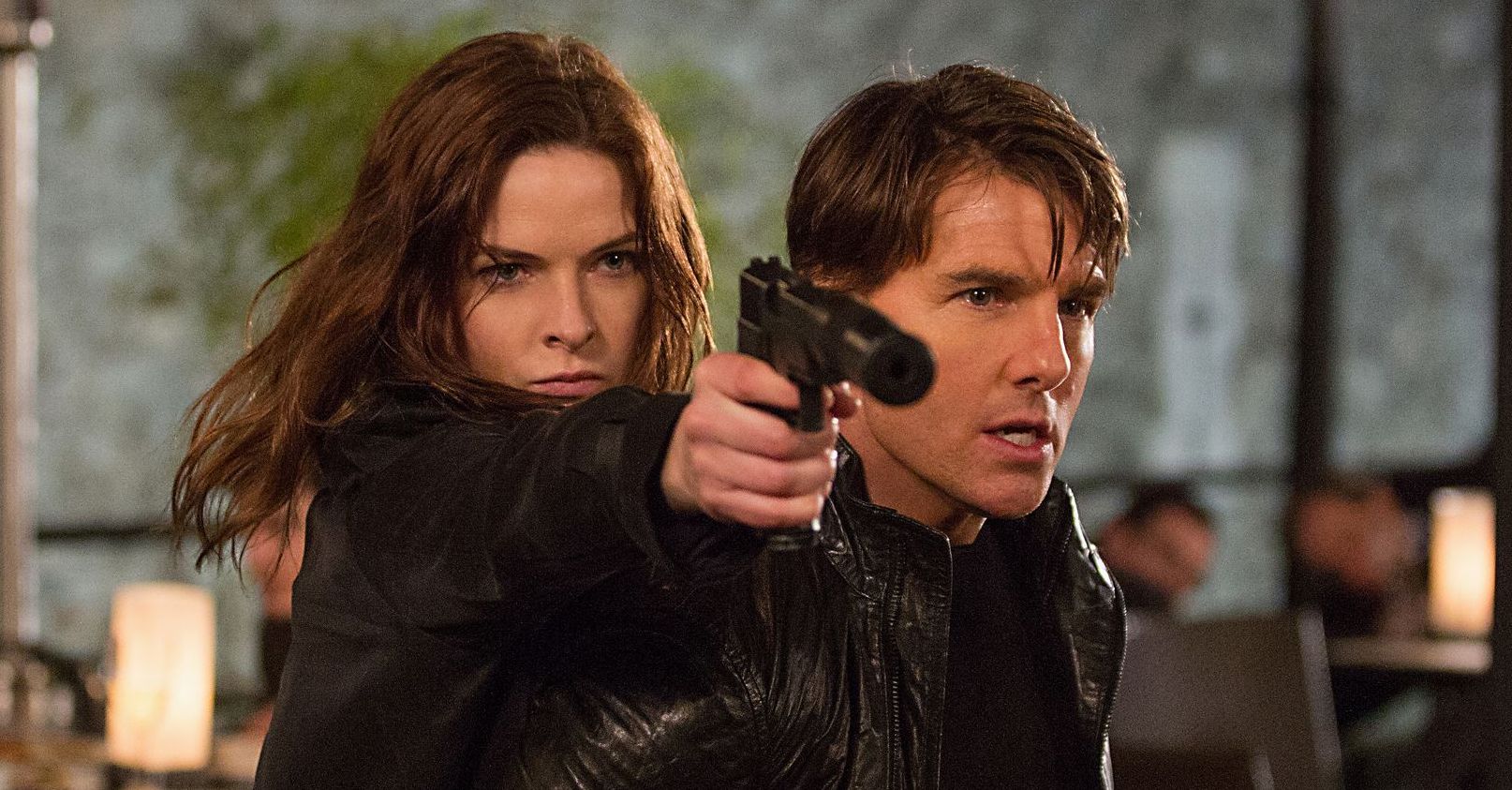
Mission: Impossible – Rogue Nation (2015) – Rebecca Ferguson as Ilsa Faust
Even though Faust (above) is the best female character in the franchise to this point, this section will be relatively brief. That’s because I already wrote about Ferguson in detail at the time the movie came out, so I direct you to the previous piece for a full assessment. Here, I’ll just point out that she’s every bit an equal to Hunt – she is, more or less, the British equivalent thereof – and saves his Yankee ass on more than one occasion. Not least when he’s floating, limp as a pool noodle, in an underwater cooling system. Having rewatched this recently, what I said at the time still stands: “It’s a combination of old-school grace and new-school ruthless efficiency which helps make for a winning product.” There’s a reason Ilsa became the first woman to return for a meaningful role in a second installment.
 Mission: Impossible – Fallout (2018) – Vanessa Kirby as Alanna Mitsopolis, the White Widow
Mission: Impossible – Fallout (2018) – Vanessa Kirby as Alanna Mitsopolis, the White Widow
There are quite a few candidates here. As well as the returning Ferguson and (in the later stages) Monaghan, there’s also a female head of the CIA, Erika Sloane, played by Angela Bassett, who is every bit the hard-ass you would expect. But I want to call out Kirby’s arms dealer, not least because that’s rarely a profession in which cinema ever shows a woman operating. Alanna is assisted by her brother, Zola, who provides the muscle. But it’s entirely clear who is the brains, and who is running the organization. It also appears to be a generational business. In a nice throwback touch, she’s the daughter of Max, played by Vanessa Redgrave, who was arrested by Ethan Hunt all the way back in the first movie. Kirby had just had her eighth birthday when that came out, which gives you some idea how long the franchise has been running!
Mission: Impossible – Dead Reckoning Part One (2023) – Hayley Atwell as Grace
The seventh entry is split into two parts, with the first half out in July 2023, and the second… at some point after the writers and actors go back to work. There is no shortage of strong women in the opening installment, with a full quartet to choose from – though, let’s just say, there will be less competition in the next part. Ferguson and Kirby reprised their roles, but the main female role goes to Atwell, who should be familiar here due to her role as Agent Carter. While Simon Pegg’s description of Atwell’s training as “Proper Matrix shit” appears. sadly, to have been hyperbole, her lady thief held her own. She fools Ethan Hunt more than once, and is a key part of the film’s two big set-pieces, a car chase through Rome and the finale involving a series of dangling train carriages.
But, wait! There’s more! For even more action-oriented is Paris (Pom Klementieff), the main sidekick of the film’s bad guy, Gabriel – okay, technically, the movie’s villain is an AI, but let’s not get into that. While a woman of few words, she looks great, and has some of the best facial expressions. In particular, when she’s pursuing Ethan and Grace through Rome, driving a giant Hummer, she seems to rejoice in the resulting carnage, if her mayhem-induced grin is anything to go by. After being spared by Hunt, and later paying back that debt, her fate at the end of the first movie is… uncertain. But word is that Klementieff was signed for both films, and I’d love to see more of her in the franchise finale.





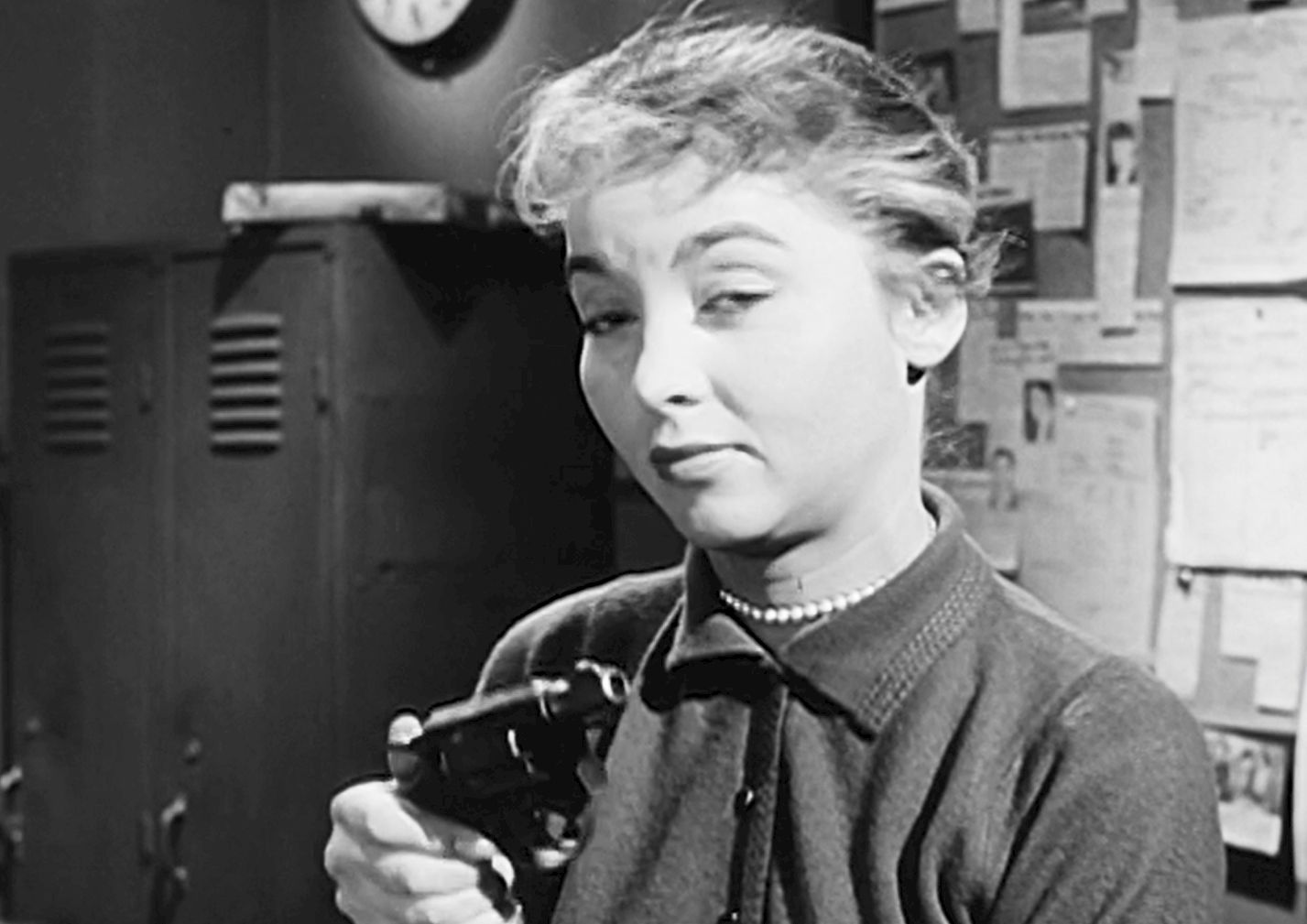
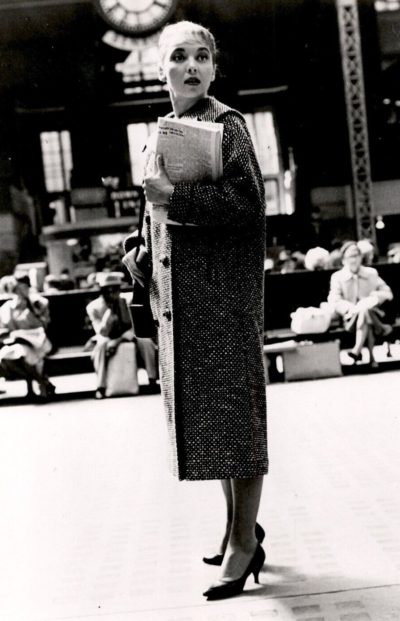 With a lot of voice-overs, the style feels reminiscent of Dragnet, which had been a very popular show for most of the fifties. Each episode opens with a stern reminder: “Presented as a tribute to the Bureau of Policewomen, Police Department, City of New York,” and centre on the cases worked by Patricia “Casey” Jones (Garland). As the title suggests, most of them involve Jones going undercover in some guise. That covers an extremely broad range of assignments, from a photographer to a junkie, a nurse to a blackmailer, a high society girl to a prisoner. However, some of the episodes do not require such subterfuge, though there is a tendency for these crimes she is given for investigation to be fairly gynocentric, e.g. trying to find a delinquent father.
With a lot of voice-overs, the style feels reminiscent of Dragnet, which had been a very popular show for most of the fifties. Each episode opens with a stern reminder: “Presented as a tribute to the Bureau of Policewomen, Police Department, City of New York,” and centre on the cases worked by Patricia “Casey” Jones (Garland). As the title suggests, most of them involve Jones going undercover in some guise. That covers an extremely broad range of assignments, from a photographer to a junkie, a nurse to a blackmailer, a high society girl to a prisoner. However, some of the episodes do not require such subterfuge, though there is a tendency for these crimes she is given for investigation to be fairly gynocentric, e.g. trying to find a delinquent father.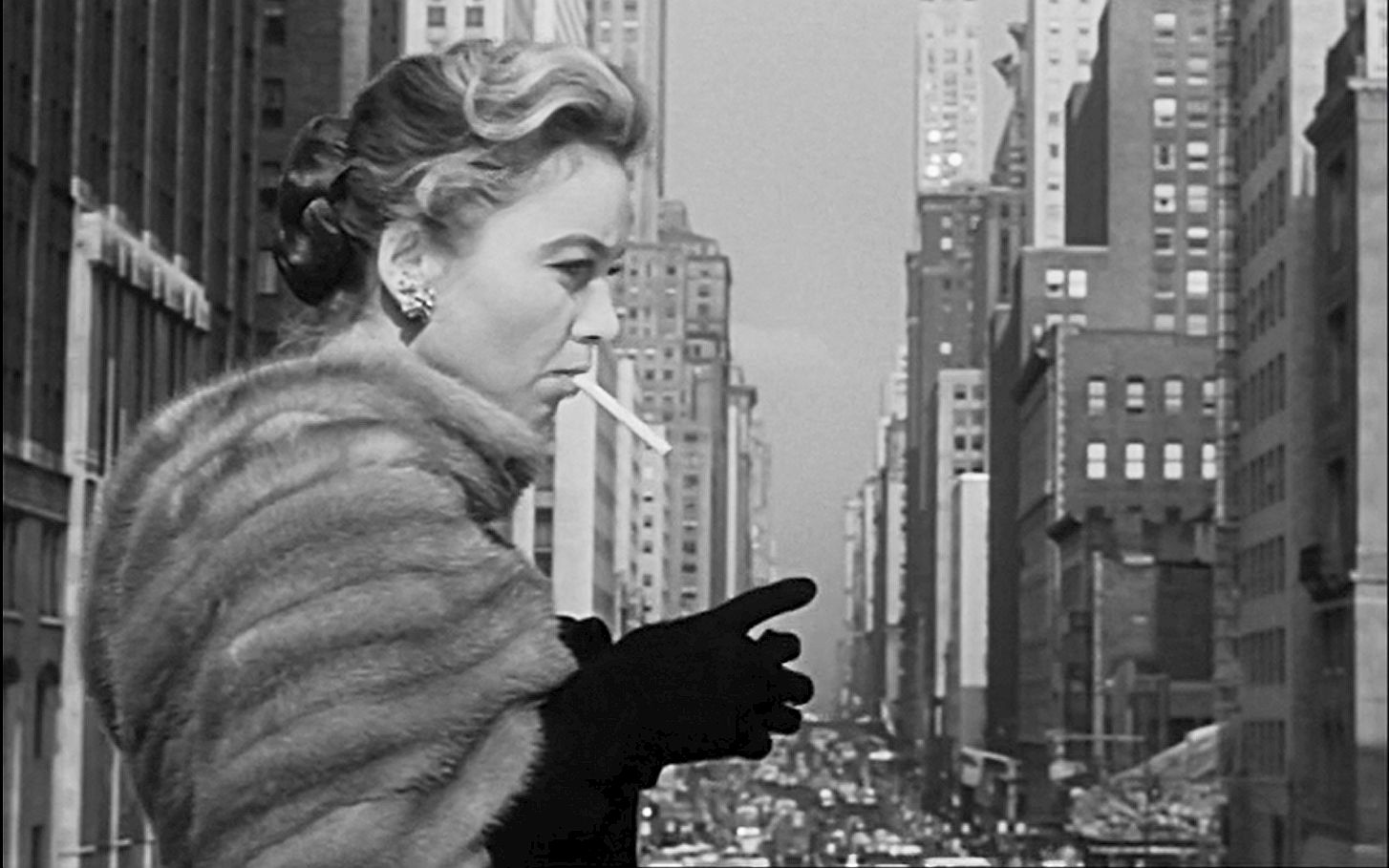
 This article was inspired by my mild irritation at documentary film
This article was inspired by my mild irritation at documentary film 
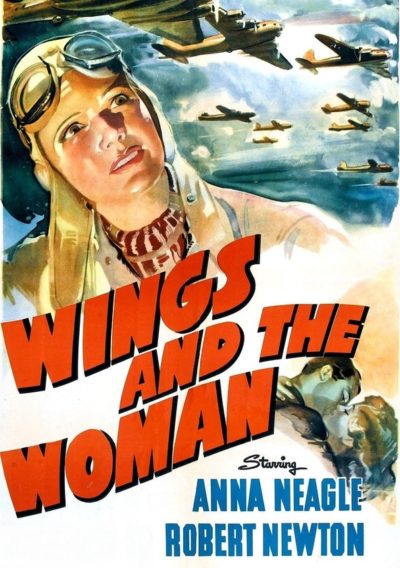 This bio-pic of aviator Amy Johnson appeared in British cinemas a scant eighteen months after she disappeared over the River Thames. That put its release squarely in the middle of World War II, and explains its nature which, in the later stages, could certainly be called propaganda. There’s not many other ways to explain pointed lines like “Our great sailors won the freedom of the seas. And it’s up to us to win the freedom of the skies. This is first said during a speech given by Johnson in Australia, then repeated at the end, over a rousing montage of military marching and flying. I almost expected it to end with, “Do you want to know more?”
This bio-pic of aviator Amy Johnson appeared in British cinemas a scant eighteen months after she disappeared over the River Thames. That put its release squarely in the middle of World War II, and explains its nature which, in the later stages, could certainly be called propaganda. There’s not many other ways to explain pointed lines like “Our great sailors won the freedom of the seas. And it’s up to us to win the freedom of the skies. This is first said during a speech given by Johnson in Australia, then repeated at the end, over a rousing montage of military marching and flying. I almost expected it to end with, “Do you want to know more?” It’s interesting to compare the approach taken in this biopic of aviation heroine Amy Johnson, made in 1984, with the one over 40 years earlier (and shortly after her death) in
It’s interesting to compare the approach taken in this biopic of aviation heroine Amy Johnson, made in 1984, with the one over 40 years earlier (and shortly after her death) in 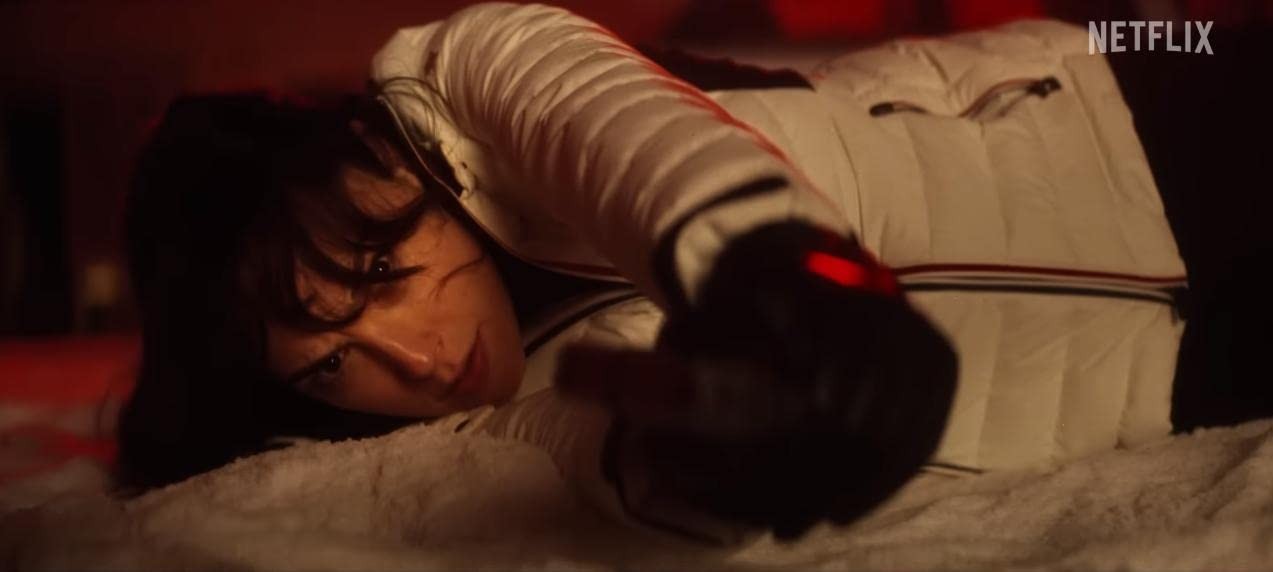 It’s always interesting to look back at the
It’s always interesting to look back at the 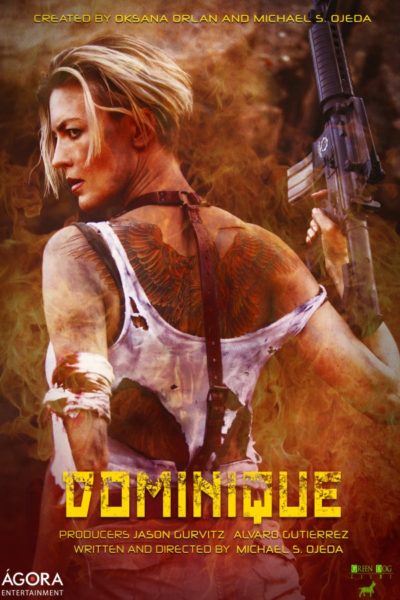 Dominique: Rise of the Phoenix (January)
Dominique: Rise of the Phoenix (January) Night Train (January 13)
Night Train (January 13)

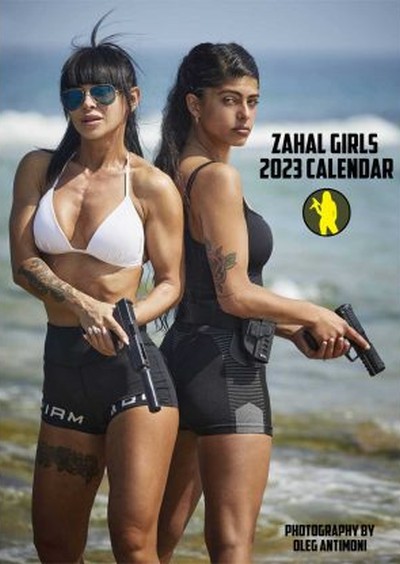
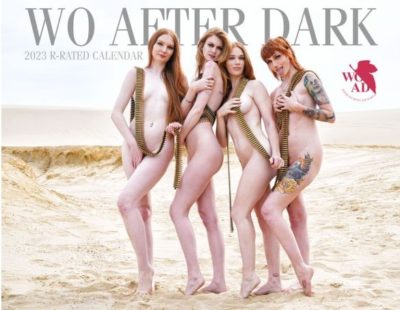







 But it turned out to be only the beginning. It seemed that everywhere I looked, there was another film about Joan, waiting to be found. A 1957 filmed stage play, shown on television of the time. A pre-war propaganda piece made by the Third Reich film office. A contemporary take, in which Joan becomes a right-wing political terrorist. Or all the way back to 1900, when legendary pioneer Georges Méliès made a short film, potentially the first biopic. Finally, I had to stop looking, simply because I needed this project to go to press. It remains incomplete. There are still items I’ve been unable to locate, such as 1999’s experimental feature, Wired Angel. But it has been an interesting enterprise. I think I’ve learned that, like many legendary figures from history, people will see in Joan what they want to see. The historical narrative is, as we’ll see, incomplete, and the gaps are open to personal interpretation.
But it turned out to be only the beginning. It seemed that everywhere I looked, there was another film about Joan, waiting to be found. A 1957 filmed stage play, shown on television of the time. A pre-war propaganda piece made by the Third Reich film office. A contemporary take, in which Joan becomes a right-wing political terrorist. Or all the way back to 1900, when legendary pioneer Georges Méliès made a short film, potentially the first biopic. Finally, I had to stop looking, simply because I needed this project to go to press. It remains incomplete. There are still items I’ve been unable to locate, such as 1999’s experimental feature, Wired Angel. But it has been an interesting enterprise. I think I’ve learned that, like many legendary figures from history, people will see in Joan what they want to see. The historical narrative is, as we’ll see, incomplete, and the gaps are open to personal interpretation.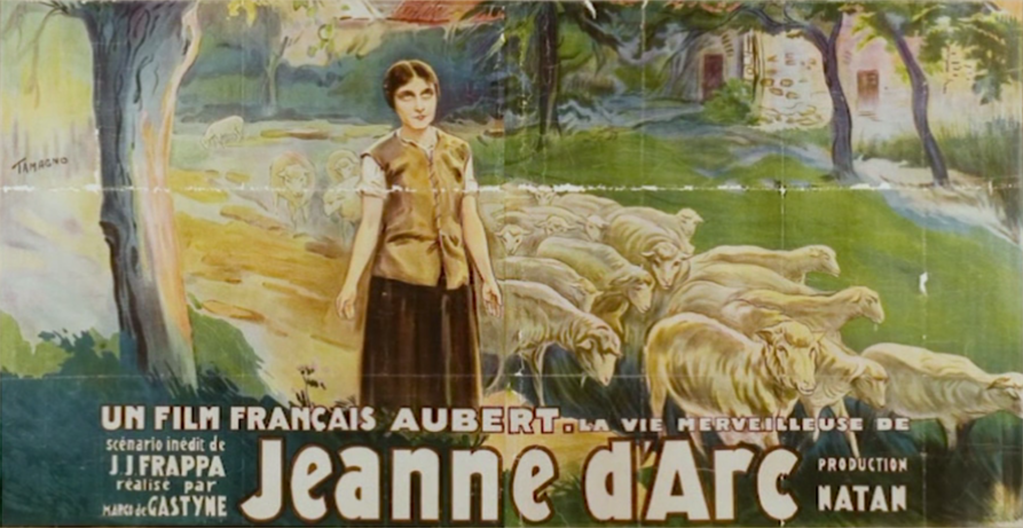 ★★★★
★★★★ I generally make it a rule not to review foreign movies without subtitles, simply because it’s difficult to judge them reasonably if you can’t understand them. I made an exception for this 1929 French film for a couple of reasons. Firstly, it’s silent, so comprehension is limited only to the intertitles: I can read the language better than I can understand it spoken. Also, it was approximately the eleven millionth version of the Joan of Arc story I’d seen in the past month: I think I had a pretty good handle on the plot by this point. Boy, am I glad I did, because it’s the best silent film I’ve seen, albeit in my quite limited experience of them.
I generally make it a rule not to review foreign movies without subtitles, simply because it’s difficult to judge them reasonably if you can’t understand them. I made an exception for this 1929 French film for a couple of reasons. Firstly, it’s silent, so comprehension is limited only to the intertitles: I can read the language better than I can understand it spoken. Also, it was approximately the eleven millionth version of the Joan of Arc story I’d seen in the past month: I think I had a pretty good handle on the plot by this point. Boy, am I glad I did, because it’s the best silent film I’ve seen, albeit in my quite limited experience of them.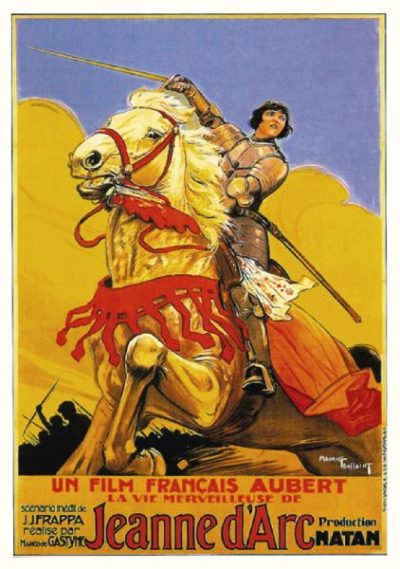 History has largely forgotten this version, in favour of Carl Theodor Dreyer’s La Passion de Jeanne d’Arc. Both movies were produced concurrently, interest in the topic apparently having been spurred by the canonization of Joan at the start of the twenties, and the approaching 500th anniversary of the events in her life. However, delays during filming meant this adaptation was beaten to the cinema by Dreyer’s. It perhaps was also impacted commercially by the arrival of the new-fangled “talkies”, leaving silent movies like this looking old-fashioned. Half a century later, the film was eventually restored, and can be found on YouTube as well as
History has largely forgotten this version, in favour of Carl Theodor Dreyer’s La Passion de Jeanne d’Arc. Both movies were produced concurrently, interest in the topic apparently having been spurred by the canonization of Joan at the start of the twenties, and the approaching 500th anniversary of the events in her life. However, delays during filming meant this adaptation was beaten to the cinema by Dreyer’s. It perhaps was also impacted commercially by the arrival of the new-fangled “talkies”, leaving silent movies like this looking old-fashioned. Half a century later, the film was eventually restored, and can be found on YouTube as well as 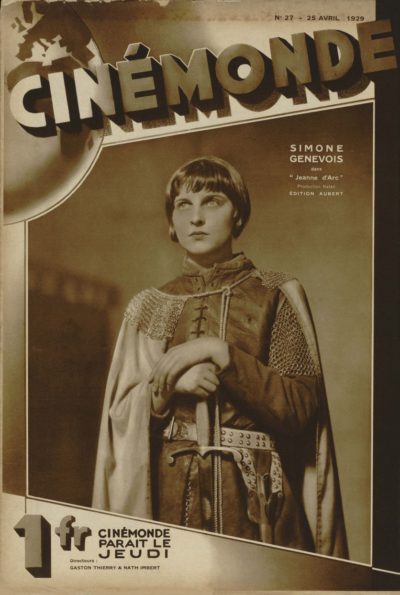 Then there’s the burning at the stake, another scene which came uncomfortably close to historical accuracy for Genevois. “The moment the wood caught fire I yelled ‘It burns!’ [The director] Marco was so sure I was afraid, that he did nothing at all. All of a sudden the cameraman, Gaston Brun, shouted ‘She’s burning!’ and everyone ran towards me, because I was tied up and couldn’t budge. I was very frightened.” Even putting that aside, there’s no denying the emotional wallop it packs, particularly in the extended shot of Joan walking towards her death: Simone’s face, again, sells this in a way which left me genuinely distraught. This doesn’t happen often, and never before while watching any silent movie.
Then there’s the burning at the stake, another scene which came uncomfortably close to historical accuracy for Genevois. “The moment the wood caught fire I yelled ‘It burns!’ [The director] Marco was so sure I was afraid, that he did nothing at all. All of a sudden the cameraman, Gaston Brun, shouted ‘She’s burning!’ and everyone ran towards me, because I was tied up and couldn’t budge. I was very frightened.” Even putting that aside, there’s no denying the emotional wallop it packs, particularly in the extended shot of Joan walking towards her death: Simone’s face, again, sells this in a way which left me genuinely distraught. This doesn’t happen often, and never before while watching any silent movie.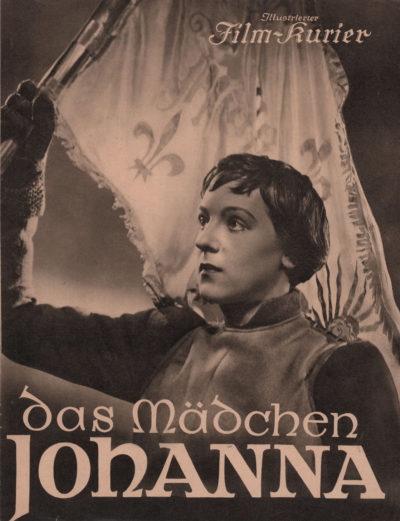 It’s basically impossible to separate this from the time and place in which it was made: that being Nazi Germany, just a few years before the outbreak of World War II. The portrayal of, not only Johanna/Joan of Arc, but the rest of the participants, has to be read in this light. It certainly explains why neither the English nor the French sides exactly come over as covered in glory. From the former camp, we have Lord Talbot, who is cruel to an almost cartoonish degree. On the latter we have King Charles VII (Gründgens), who is cynical to a fault, and has no qualms at all about using Joan when convenient, then discarding her when she isn’t.
It’s basically impossible to separate this from the time and place in which it was made: that being Nazi Germany, just a few years before the outbreak of World War II. The portrayal of, not only Johanna/Joan of Arc, but the rest of the participants, has to be read in this light. It certainly explains why neither the English nor the French sides exactly come over as covered in glory. From the former camp, we have Lord Talbot, who is cruel to an almost cartoonish degree. On the latter we have King Charles VII (Gründgens), who is cynical to a fault, and has no qualms at all about using Joan when convenient, then discarding her when she isn’t.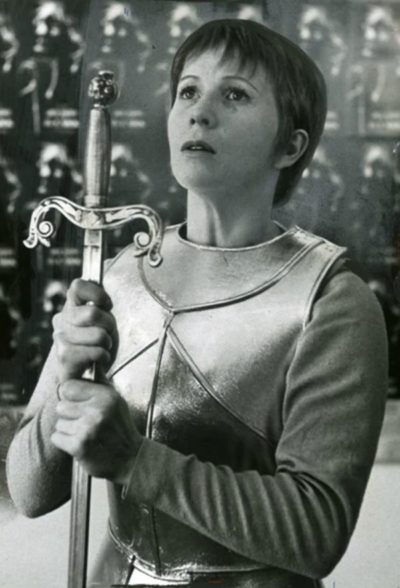 This was originally a French play, L’Alouette, written by Jean Anouilh in 1952. Three years later, a translated version was brought to Broadway, where it ran for 226 performances from November 1955 until June 1956. Julie Harris played Joan, and there was quite a star-studded cast behind her, including Boris Karloff as Bishop Cauchon, Christopher Plummer and Theodore Bikel. It was critically acclaimed, Harris winning that year’s Tony Award as Best Leading Actress, and Karloff being nominated as Best Leading Actor. The following February, a TV adaptation was screened in the United, though wasn’t the first or the last such. In November 1956, the BBC screened their version, with Hazel Penwarden as Joan, and a supporting cast including Michael Caine. Additionally, 1958 saw an Australian version, though it seems notable only for having Olivia Newton-John’s father in the cast.
This was originally a French play, L’Alouette, written by Jean Anouilh in 1952. Three years later, a translated version was brought to Broadway, where it ran for 226 performances from November 1955 until June 1956. Julie Harris played Joan, and there was quite a star-studded cast behind her, including Boris Karloff as Bishop Cauchon, Christopher Plummer and Theodore Bikel. It was critically acclaimed, Harris winning that year’s Tony Award as Best Leading Actress, and Karloff being nominated as Best Leading Actor. The following February, a TV adaptation was screened in the United, though wasn’t the first or the last such. In November 1956, the BBC screened their version, with Hazel Penwarden as Joan, and a supporting cast including Michael Caine. Additionally, 1958 saw an Australian version, though it seems notable only for having Olivia Newton-John’s father in the cast.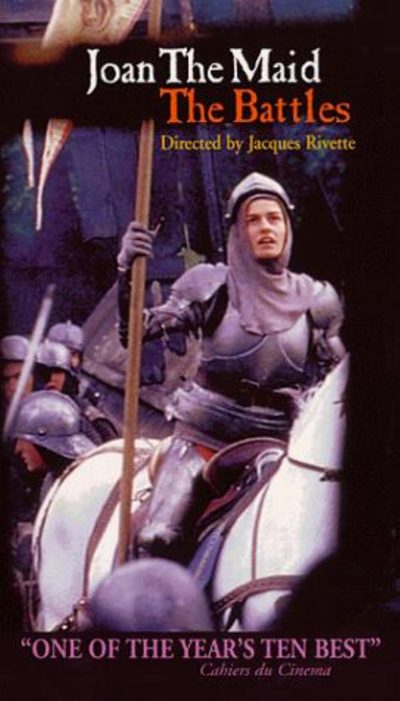 The above refers to the title, and in particular “The Battles”. It is a solid two hours before anything more than handfuls of English and French troops lobbing rocks at each other show up. So if you are here for large-scale spectacle, keep on walking. You will be disappointed. I had a certain idea of what to expect, having seen Rivette’s immediately preceding film La Belle Noiseuse. Admittedly, I saw it largely because I had the hots for Emmanuelle Beart at the time. Otherwise, a four-hour movie, containing lengthy sequences of real-time painting would probably not have been on my radar. But I kinda liked its languid pace (the copious Beart nudity didn’t hurt, let’s be honest!), and so was prepared for things in this to unfold at a similarly leisurely pace.
The above refers to the title, and in particular “The Battles”. It is a solid two hours before anything more than handfuls of English and French troops lobbing rocks at each other show up. So if you are here for large-scale spectacle, keep on walking. You will be disappointed. I had a certain idea of what to expect, having seen Rivette’s immediately preceding film La Belle Noiseuse. Admittedly, I saw it largely because I had the hots for Emmanuelle Beart at the time. Otherwise, a four-hour movie, containing lengthy sequences of real-time painting would probably not have been on my radar. But I kinda liked its languid pace (the copious Beart nudity didn’t hurt, let’s be honest!), and so was prepared for things in this to unfold at a similarly leisurely pace. Just as part 1,
Just as part 1, 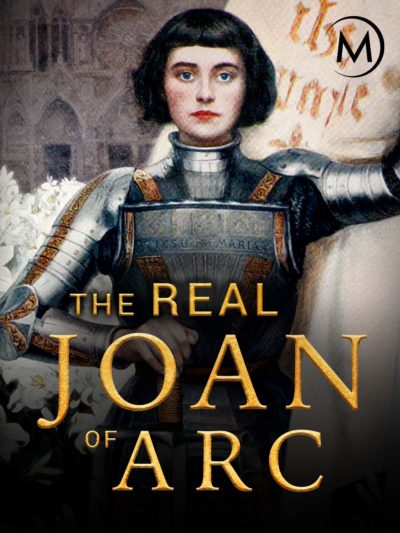 Pun mot intended, but the reality is, we know very little for sure about Joan of Arc. Not even what she looked like in detail, for there are no surviving portraits of her, dating from when she was alive. The facts about her life are equally as uncertain, because everything about Joan was subject to spin, depending on who was talking, when they were saying it, and what agenda they sought to achieve. Because everybody involved
Pun mot intended, but the reality is, we know very little for sure about Joan of Arc. Not even what she looked like in detail, for there are no surviving portraits of her, dating from when she was alive. The facts about her life are equally as uncertain, because everything about Joan was subject to spin, depending on who was talking, when they were saying it, and what agenda they sought to achieve. Because everybody involved  I initially intended to review this and its sequel, Jeanme, by Dumont as one entity, for a couple of reasons. They really only work as a single item. This confused the hell out me, because the second film turned up on a streaming service by itself. Five minutes in, I was so confused, I started searching the Internet, only to find I had, in effect, joined a movie already two hours in progress. Also, I suspected I would be hard-pushed to deliver 500 words on
I initially intended to review this and its sequel, Jeanme, by Dumont as one entity, for a couple of reasons. They really only work as a single item. This confused the hell out me, because the second film turned up on a streaming service by itself. Five minutes in, I was so confused, I started searching the Internet, only to find I had, in effect, joined a movie already two hours in progress. Also, I suspected I would be hard-pushed to deliver 500 words on  I liked this considerably better than its predecessor. Part of that was, perhaps, knowing what to expect going in: a minimalist retelling, with occasional musical numbers. Except, this proved rather more than minimalist (though still very restrained), and there was hardly any singing at all. Curse you, Dumont, for confounding my expectations. It begins, much as Jeanette ended: with a lot of standing around in sand-dunes, chatting. However, the cast this time cannot be counted on the fingers of one hand, and there aren’t any staggeringly bad performances to take you out of the movie. You still don’t get any great battles. Instead, these are basically represented by team dressage, two groups of horses and riders, swirling around near each other.
I liked this considerably better than its predecessor. Part of that was, perhaps, knowing what to expect going in: a minimalist retelling, with occasional musical numbers. Except, this proved rather more than minimalist (though still very restrained), and there was hardly any singing at all. Curse you, Dumont, for confounding my expectations. It begins, much as Jeanette ended: with a lot of standing around in sand-dunes, chatting. However, the cast this time cannot be counted on the fingers of one hand, and there aren’t any staggeringly bad performances to take you out of the movie. You still don’t get any great battles. Instead, these are basically represented by team dressage, two groups of horses and riders, swirling around near each other. Joan is always a figure who has the potential to be co-opted into other times and locations. Recently, we reviewed
Joan is always a figure who has the potential to be co-opted into other times and locations. Recently, we reviewed 
 Yeah, I’ll confess to having Laura Branigan’s eighties hit running through my head on repeat almost the entire movie, even if its lyrics can only be tangentially tied to it. What also struck me is how strong of an influence this was on Luc Besson’s Leon, especially at the beginning. I mean: a criminal gang takes out an entire family in a New York tenement, except for one child, as punishment for the father having tried to steal from them. That survivor takes refuge with a very reluctant neighbour with mob ties, who then has to protect the child as they move about the city. There’s even a scene where one of the gang fires his gun at a nosy resident.
Yeah, I’ll confess to having Laura Branigan’s eighties hit running through my head on repeat almost the entire movie, even if its lyrics can only be tangentially tied to it. What also struck me is how strong of an influence this was on Luc Besson’s Leon, especially at the beginning. I mean: a criminal gang takes out an entire family in a New York tenement, except for one child, as punishment for the father having tried to steal from them. That survivor takes refuge with a very reluctant neighbour with mob ties, who then has to protect the child as they move about the city. There’s even a scene where one of the gang fires his gun at a nosy resident.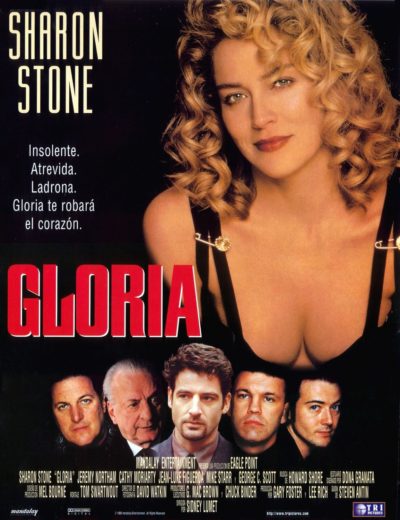 Nineteen years after the original, four-time Oscar nominated director Lumet opted to remake Cassavetes’s movie. Though by some accounts, it was more a case of him wanting to work, rather than being particularly attracted to the project. If the results are anything to go by, he should have stayed at home. For the film was a bomb, and leading lady Stone received a Razzie nomination for her efforts. I wouldn’t have said she was that bad, though she’s clearly not at the same level as Gina Rowlands in the original. It does also address some of what I felt were its’ predecessor’s weaknesses. However, it tones down the central character, and this helps lead to what you’d be hard-pressed to argue is other than an inferior product overall.
Nineteen years after the original, four-time Oscar nominated director Lumet opted to remake Cassavetes’s movie. Though by some accounts, it was more a case of him wanting to work, rather than being particularly attracted to the project. If the results are anything to go by, he should have stayed at home. For the film was a bomb, and leading lady Stone received a Razzie nomination for her efforts. I wouldn’t have said she was that bad, though she’s clearly not at the same level as Gina Rowlands in the original. It does also address some of what I felt were its’ predecessor’s weaknesses. However, it tones down the central character, and this helps lead to what you’d be hard-pressed to argue is other than an inferior product overall.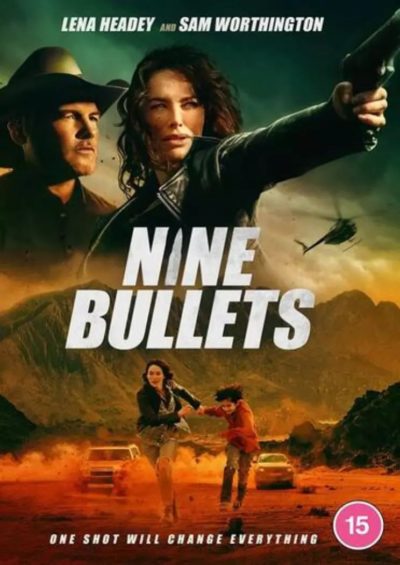 While this is not an “official” remake of Gloria, it’s so damn close that I have no problem considering it as one. Writer/director Gaston seems to have… um, a bit of a track record in this area, shall we say. She previously appeared here by directing
While this is not an “official” remake of Gloria, it’s so damn close that I have no problem considering it as one. Writer/director Gaston seems to have… um, a bit of a track record in this area, shall we say. She previously appeared here by directing 
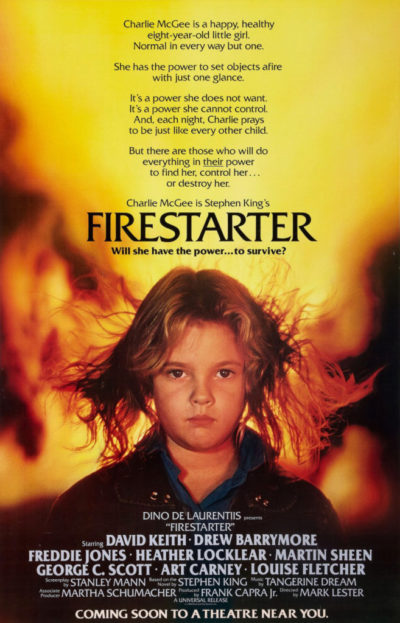 It’s somewhat ironic that John Carpenter was originally supposed to direct this. However, after The Thing tanked at the box-office, he was let go from the project, and replaced by the more commercially “safe” Lester. The irony being that The Thing is now regarded (rightfully) as one of the greatest scifi/horror films of all time, while this is… not. It’s very much a mid-tier Stephen King adaptation, far less well remembered than the similarly themed The Dead Zone, from around the same time. I can understand why: it’s lumbering when it needs to be taut, needlessly coming in a little shy of two hours, and only comes to life at the end, when a pissed-off Drew gets enough XP to learn her Level 3 Fireball spell.
It’s somewhat ironic that John Carpenter was originally supposed to direct this. However, after The Thing tanked at the box-office, he was let go from the project, and replaced by the more commercially “safe” Lester. The irony being that The Thing is now regarded (rightfully) as one of the greatest scifi/horror films of all time, while this is… not. It’s very much a mid-tier Stephen King adaptation, far less well remembered than the similarly themed The Dead Zone, from around the same time. I can understand why: it’s lumbering when it needs to be taut, needlessly coming in a little shy of two hours, and only comes to life at the end, when a pissed-off Drew gets enough XP to learn her Level 3 Fireball spell.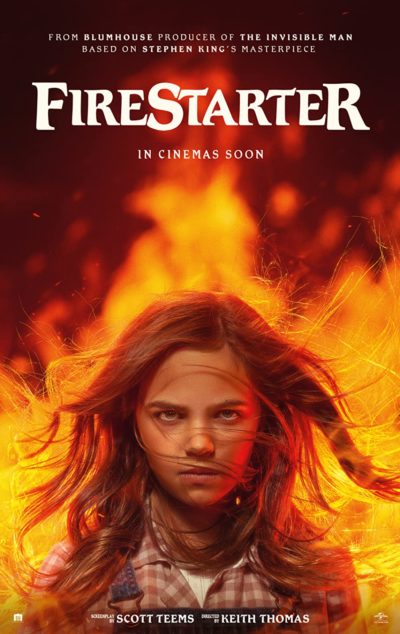 I must admit: While I always found the premise for Stephen King’s 1980 novel Firestarter interesting, I never read the book. 500 small-printed pages are just too much for me. The story itself shares some of its DNA with Carrie, with the difference that this here is about a younger child, not an adolescent, and instead of telekinesis the girl knows pyrokinesis, meaning she can create fire from nowhere and control it. It could be argued that King was just kind of re-using ideas from Carrie, making less of an effort to create something original as he did with other material. Opinions on the story seem to be split. Some think it’s a great novel, of the usual King quality; others think it’s a typical work from the time when King was writing as if he were on the run, and striking while the iron was hot (honestly, I don’t really see he has slowed down so much over the years).
I must admit: While I always found the premise for Stephen King’s 1980 novel Firestarter interesting, I never read the book. 500 small-printed pages are just too much for me. The story itself shares some of its DNA with Carrie, with the difference that this here is about a younger child, not an adolescent, and instead of telekinesis the girl knows pyrokinesis, meaning she can create fire from nowhere and control it. It could be argued that King was just kind of re-using ideas from Carrie, making less of an effort to create something original as he did with other material. Opinions on the story seem to be split. Some think it’s a great novel, of the usual King quality; others think it’s a typical work from the time when King was writing as if he were on the run, and striking while the iron was hot (honestly, I don’t really see he has slowed down so much over the years).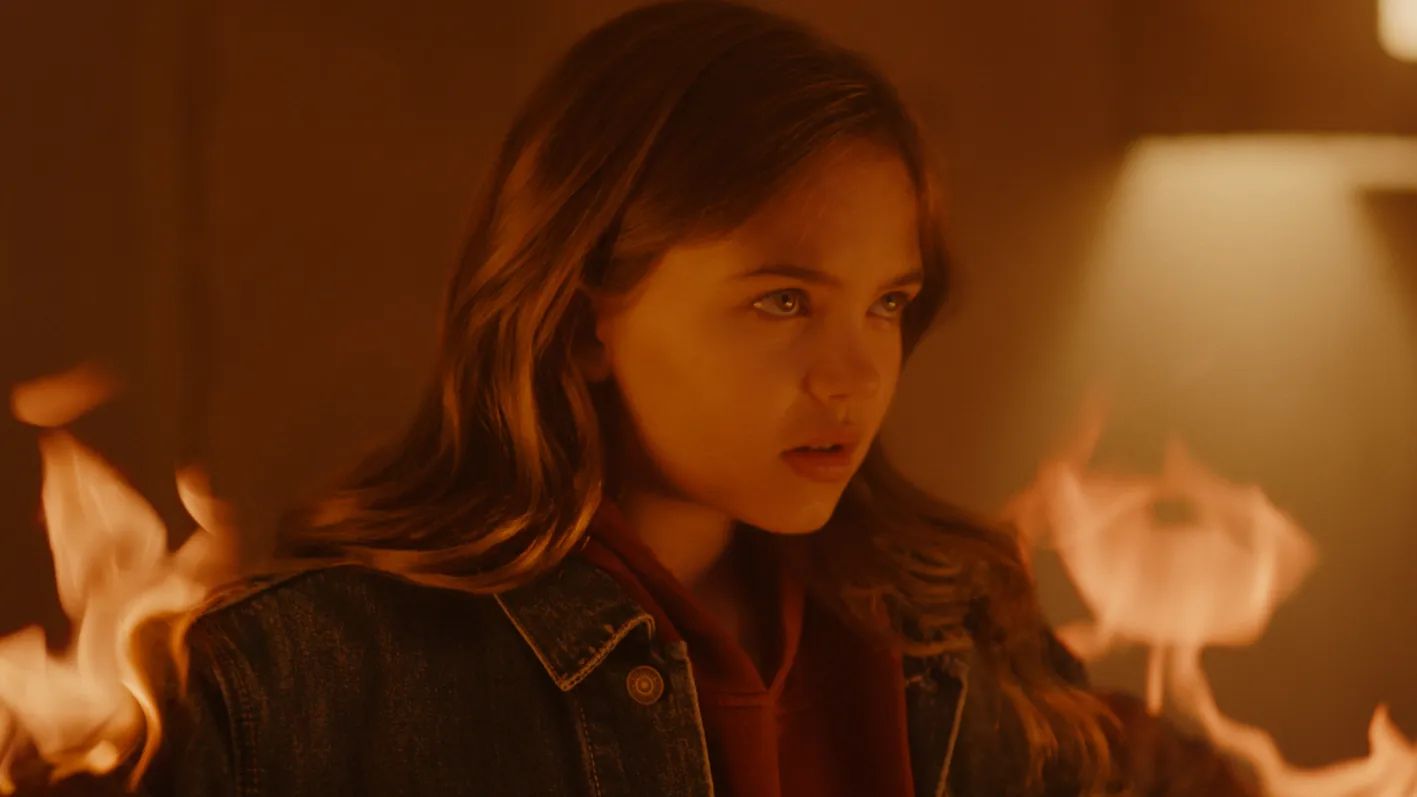 Firestarter is a strange beast with a difficult task: Retaining the core of the original story but not being to close too the orignal movie. Paying tribute to current political correctness, yet not changing the original material too much. For most of the time, they do fine, I’d say. Some changes did catch my eye: the conflict between the parents wasn’t there, as far as I remember, in the original movie. The mother wants Charlene to train so she can control her powers, the father would rather she suppress them, for who knows what may come out of them being released? In contrast, the original spent more time with Dad and daughter in the lab, the evil Rainbird slowly gaining Charlie’s confidence in order to kill her when appropriate. It went more for slow menacing tension – also the approach of King’s novel – while this plays more as a “fugitives-on-the-run” scenario.
Firestarter is a strange beast with a difficult task: Retaining the core of the original story but not being to close too the orignal movie. Paying tribute to current political correctness, yet not changing the original material too much. For most of the time, they do fine, I’d say. Some changes did catch my eye: the conflict between the parents wasn’t there, as far as I remember, in the original movie. The mother wants Charlene to train so she can control her powers, the father would rather she suppress them, for who knows what may come out of them being released? In contrast, the original spent more time with Dad and daughter in the lab, the evil Rainbird slowly gaining Charlie’s confidence in order to kill her when appropriate. It went more for slow menacing tension – also the approach of King’s novel – while this plays more as a “fugitives-on-the-run” scenario.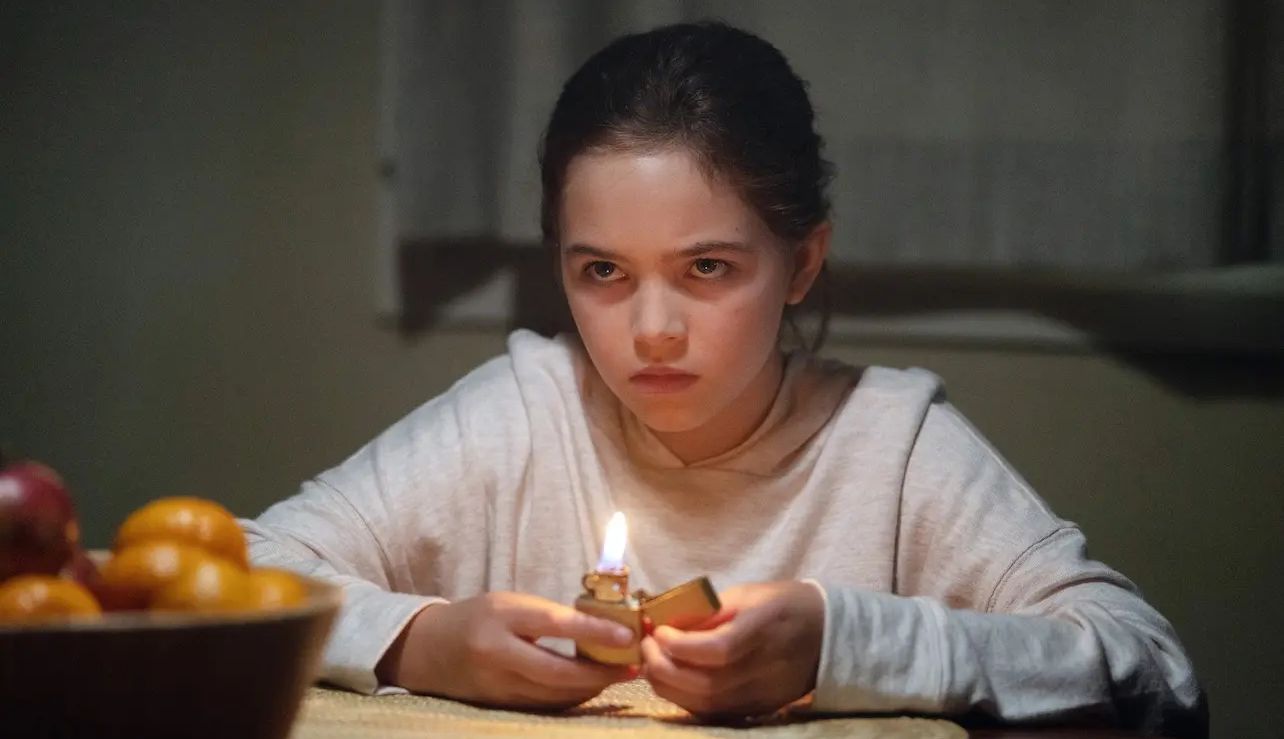
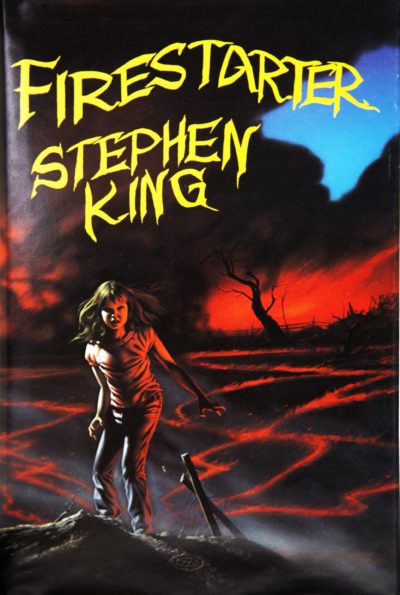 Having watched both versions of the film, I followed up by reading the book on which they were based. Despite my general fondness for horror, I haven’t read very much Stephen King: this is only the second novel of his, after Salem’s Lot. First thought: at 576 pages in the mass paperback edition, it’s quite a door-stopper, and you can see the problems in adapting a work of that size into a movie. Inevitably, a lot of the detail and nuance is going to be excised. There’s no doubt, the 1984 version is more faithful; the 2022 adaptation takes the basic concept of a young girl with pyrokinetic powers, on the run from the government with her father, and does its own thing, more or less.
Having watched both versions of the film, I followed up by reading the book on which they were based. Despite my general fondness for horror, I haven’t read very much Stephen King: this is only the second novel of his, after Salem’s Lot. First thought: at 576 pages in the mass paperback edition, it’s quite a door-stopper, and you can see the problems in adapting a work of that size into a movie. Inevitably, a lot of the detail and nuance is going to be excised. There’s no doubt, the 1984 version is more faithful; the 2022 adaptation takes the basic concept of a young girl with pyrokinetic powers, on the run from the government with her father, and does its own thing, more or less.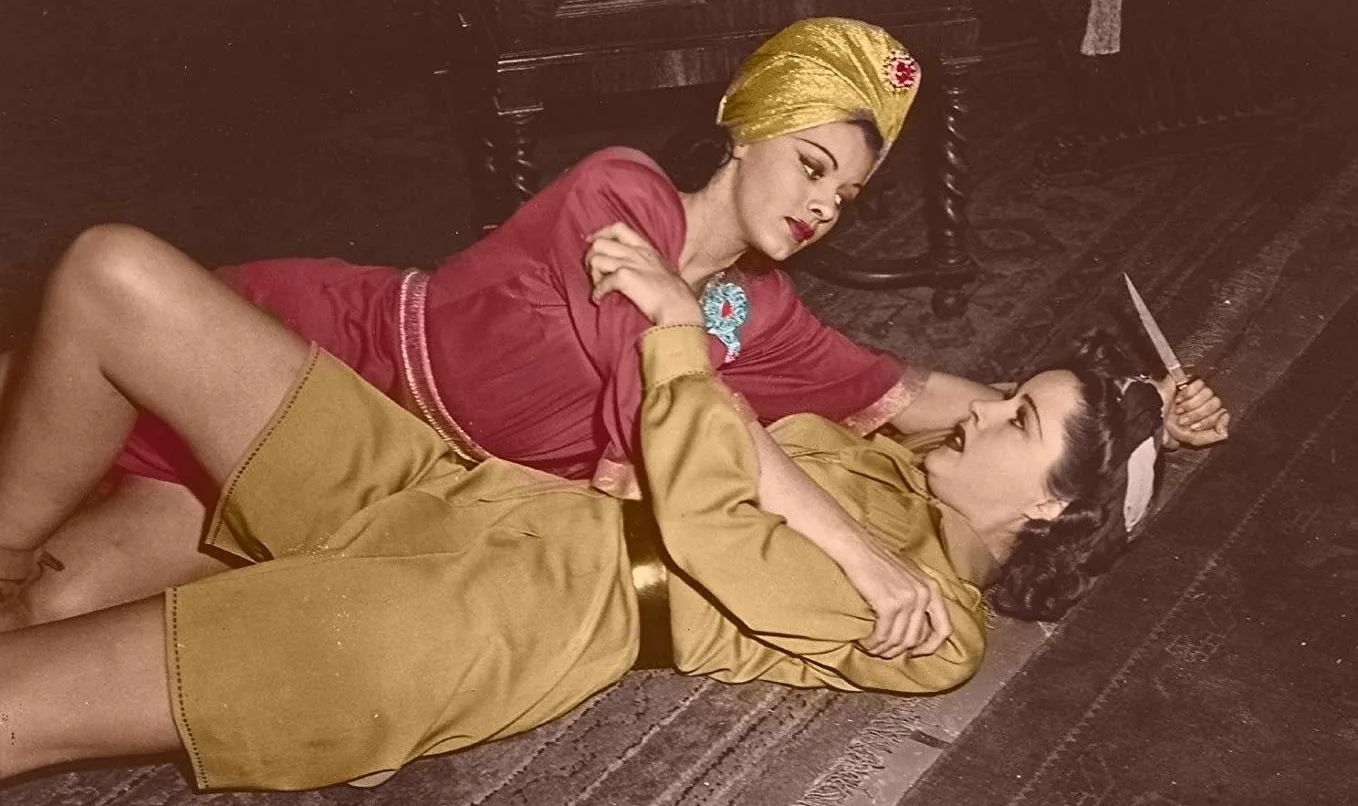 We’ve previously written about
We’ve previously written about  But for the purposes of this site, Republic leaned heavily into the “jungle girl” trope. This was a popular way of stepping around the mores of polite society, allowing the portrayal of female characters less fettered by the standards of civilized society. It’s an archetype likely founded in H. Rider Haggard’s She, where the immortal Ayesha ruled her isolated subjects. Another early example is the 1904 novel Green Mansions by William Henry Hudson, the story of jungle girl Rima, who falls in love with a Venezuelan traveller. It was later made into a 1959 movie starring… um, Audrey Hepburn and Anthony Perkins. Yes, Eliza Doolittle and Norman Bates. It was not a success. Unsurprisingly, Edgar Rice Burroughs got in on the act: the fourth novel in his signature franchise, The Son of Tarzan, introduces an example of the character in Meriem.
But for the purposes of this site, Republic leaned heavily into the “jungle girl” trope. This was a popular way of stepping around the mores of polite society, allowing the portrayal of female characters less fettered by the standards of civilized society. It’s an archetype likely founded in H. Rider Haggard’s She, where the immortal Ayesha ruled her isolated subjects. Another early example is the 1904 novel Green Mansions by William Henry Hudson, the story of jungle girl Rima, who falls in love with a Venezuelan traveller. It was later made into a 1959 movie starring… um, Audrey Hepburn and Anthony Perkins. Yes, Eliza Doolittle and Norman Bates. It was not a success. Unsurprisingly, Edgar Rice Burroughs got in on the act: the fourth novel in his signature franchise, The Son of Tarzan, introduces an example of the character in Meriem.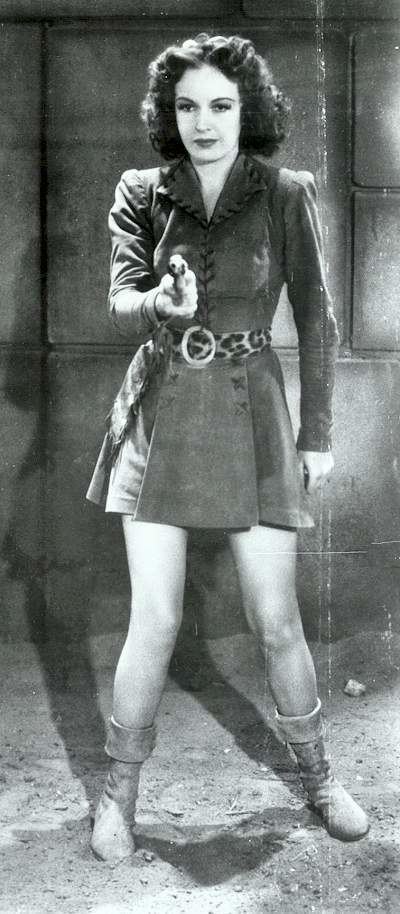 This is nominally based on Edgar Rice Burroughs’s 1932 novel of the same name, also known as The Land of Hidden Men. Though there’s very little beyond the title in common. The book was set in Cambodia, and told the story of explorer Gordon King, who finds a civilization which has been lost for a thousand years. This… isn’t. It is instead the story of Nyoka Meredith (Gifford), the daughter of a doctor working with the Masamba tribe in the middle of Africa. “Nyoka” is Swahili for snake, and she seems to spend most of her free time swinging through the forest on vines.
This is nominally based on Edgar Rice Burroughs’s 1932 novel of the same name, also known as The Land of Hidden Men. Though there’s very little beyond the title in common. The book was set in Cambodia, and told the story of explorer Gordon King, who finds a civilization which has been lost for a thousand years. This… isn’t. It is instead the story of Nyoka Meredith (Gifford), the daughter of a doctor working with the Masamba tribe in the middle of Africa. “Nyoka” is Swahili for snake, and she seems to spend most of her free time swinging through the forest on vines.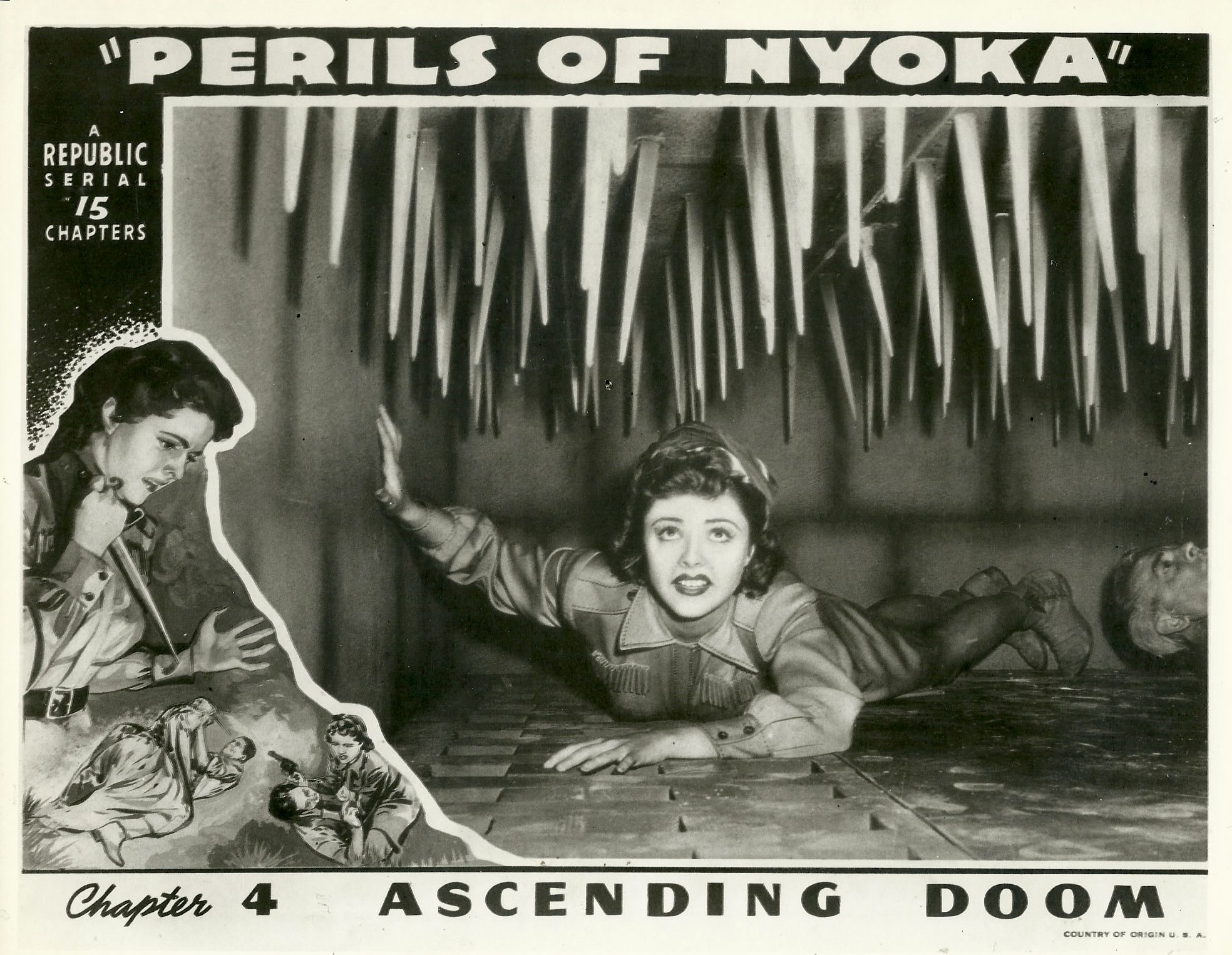 ★★★½
★★★½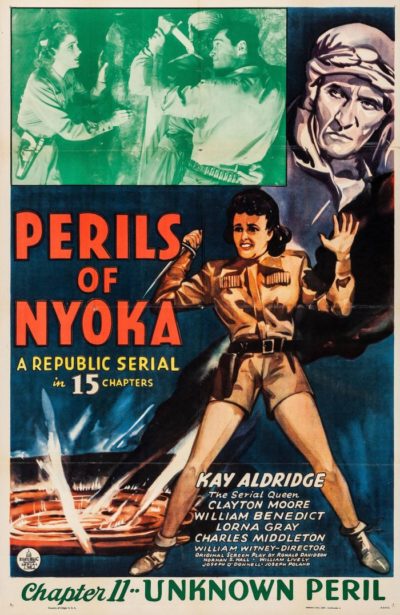 This was the first serial I had watched since
This was the first serial I had watched since 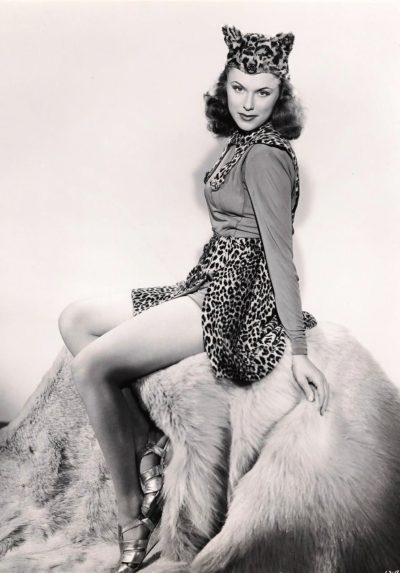 As mentioned, we’re in South America, where two competing oil companies are seeking to establish their territory. The Inter Ocean Oil Company are the current occupants, and have been working in association with the indigenous population, under their white queen (Stirling), known as the Tiger Woman. But if they don’t strike oil soon, their franchise will expire. A predatory, far less friendly (but unnamed) company, is standing by, to make sure that doesn’t happen, allowing them to take over. But Inter Ocean has sent top troubleshooter, Allen Saunders (Rock Lane), to work with the Tiger Queen and block their enemy’s attempts. Those get more desperate as the deadline approaches and Inter Ocean appear to be succeeding. Complicating matters is the Tiger Queen’s original identity as missing heiress, Rita Arnold, something her enemies want to use to their advantage.
As mentioned, we’re in South America, where two competing oil companies are seeking to establish their territory. The Inter Ocean Oil Company are the current occupants, and have been working in association with the indigenous population, under their white queen (Stirling), known as the Tiger Woman. But if they don’t strike oil soon, their franchise will expire. A predatory, far less friendly (but unnamed) company, is standing by, to make sure that doesn’t happen, allowing them to take over. But Inter Ocean has sent top troubleshooter, Allen Saunders (Rock Lane), to work with the Tiger Queen and block their enemy’s attempts. Those get more desperate as the deadline approaches and Inter Ocean appear to be succeeding. Complicating matters is the Tiger Queen’s original identity as missing heiress, Rita Arnold, something her enemies want to use to their advantage. This 12-part serial from Republic was a spin-off from the success of Zorro – though despite the title, the Z-word is never mentioned. It moves the legend from Spanish California to Idaho in the 1880’s, just before a vote to decide whether it would become a state. Villainous Dan Hammond (McDonald) begins a violent campaign to prevent this, and is opposed by local newspaper owner Randolph Meredith, who has a secret identity as The Black Whip, a masked vigilante. When he is shot dead, his sister Barbara (Stirling) takes up the cape and whip, along with the help of undercover federal agent, Vic Gordon (Lewis). Together, they foil Hammond’s increasingly-desperate plots as voting day nears, and escape from 11 precarious positions. Well, it
This 12-part serial from Republic was a spin-off from the success of Zorro – though despite the title, the Z-word is never mentioned. It moves the legend from Spanish California to Idaho in the 1880’s, just before a vote to decide whether it would become a state. Villainous Dan Hammond (McDonald) begins a violent campaign to prevent this, and is opposed by local newspaper owner Randolph Meredith, who has a secret identity as The Black Whip, a masked vigilante. When he is shot dead, his sister Barbara (Stirling) takes up the cape and whip, along with the help of undercover federal agent, Vic Gordon (Lewis). Together, they foil Hammond’s increasingly-desperate plots as voting day nears, and escape from 11 precarious positions. Well, it 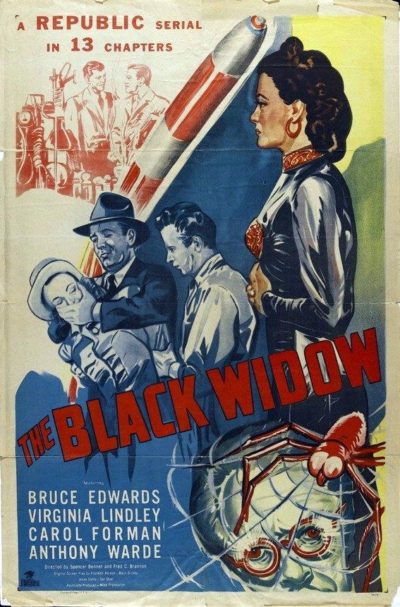 This is something of a fringe entry, and illustrates a few of the issues with Hollywood of the time. In particular, a severe reluctance to let female characters act with genuine independence. We see this on both side of the story here. The title character is Sombra (Forman), a vaguely Asiatic woman who is engaged in a plot to steal nuclear secrets from the United States. To this end, she has been trying to bribe acquaintances of a notable scientist, but the trail of spider-envenomed corpses resulting from their refusal to help has brought her to the attention of the Daily Clarion and its ace girl reporter, Joyce Winters (Lindley). Which would be fine, if the women were allowed to go head-to-head on their own terms, in the same way as
This is something of a fringe entry, and illustrates a few of the issues with Hollywood of the time. In particular, a severe reluctance to let female characters act with genuine independence. We see this on both side of the story here. The title character is Sombra (Forman), a vaguely Asiatic woman who is engaged in a plot to steal nuclear secrets from the United States. To this end, she has been trying to bribe acquaintances of a notable scientist, but the trail of spider-envenomed corpses resulting from their refusal to help has brought her to the attention of the Daily Clarion and its ace girl reporter, Joyce Winters (Lindley). Which would be fine, if the women were allowed to go head-to-head on their own terms, in the same way as 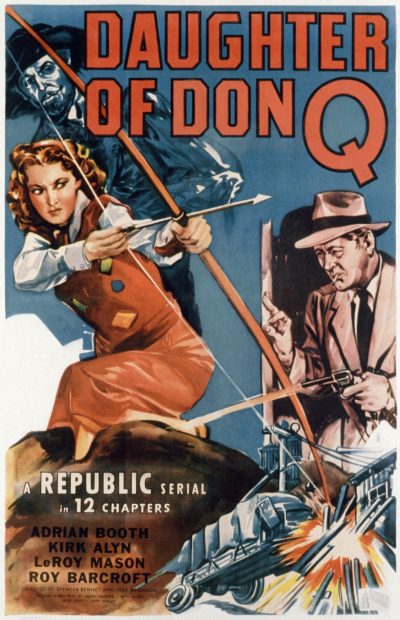 Lorna Gray, the lead here, had been the villainess in
Lorna Gray, the lead here, had been the villainess in 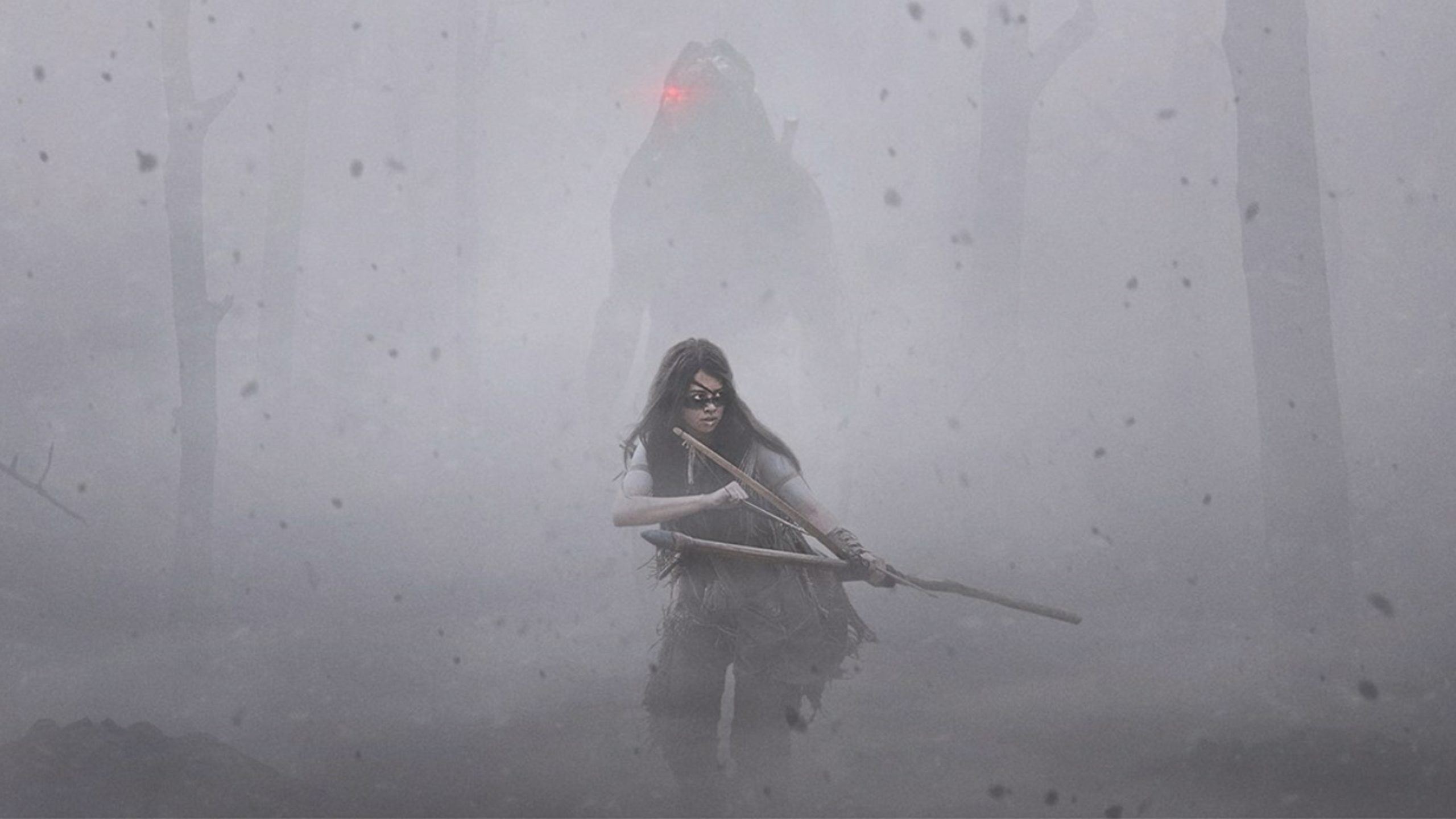 Another year is in the books. I guess 2021 was better than 2020, or at least, we were more used to the COVID world. Still haven’t been to the cinema since late 2019: the tendency for films to be released on streaming services alongside, or very shortly after, their theatrical releases influenced that decision. The most recent such example was The Matrix Resurrections, which was watched from the couch. Good thing too, as it was severely underwhelming across the board. An amazing contrast to the original film, which broke so much new ground, and gave us an iconic action heroine
Another year is in the books. I guess 2021 was better than 2020, or at least, we were more used to the COVID world. Still haven’t been to the cinema since late 2019: the tendency for films to be released on streaming services alongside, or very shortly after, their theatrical releases influenced that decision. The most recent such example was The Matrix Resurrections, which was watched from the couch. Good thing too, as it was severely underwhelming across the board. An amazing contrast to the original film, which broke so much new ground, and gave us an iconic action heroine 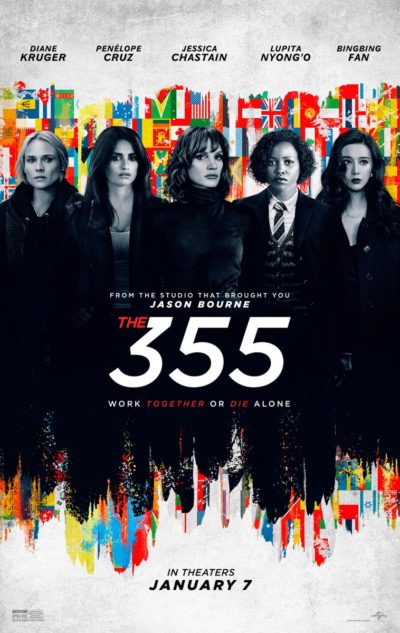 But enough looking back to the past. I’ve scrolled through several hundred upcoming candidates of features due to be released in 2022, and these are the ones which have most potential to be covered on this site at some point next year. What stands out in particular, is how many of these are streaming rather than theatrical (or even DVD – is that still a thing?), As ever, they are in alphabetical order; the release dates given are the ones for the United States, and are subject to change – though most are TBA! It may also be that any of them don’t actually qualify here, when the full product is available for assessment. Synopsis in quotes are taken from the IMDb.
But enough looking back to the past. I’ve scrolled through several hundred upcoming candidates of features due to be released in 2022, and these are the ones which have most potential to be covered on this site at some point next year. What stands out in particular, is how many of these are streaming rather than theatrical (or even DVD – is that still a thing?), As ever, they are in alphabetical order; the release dates given are the ones for the United States, and are subject to change – though most are TBA! It may also be that any of them don’t actually qualify here, when the full product is available for assessment. Synopsis in quotes are taken from the IMDb.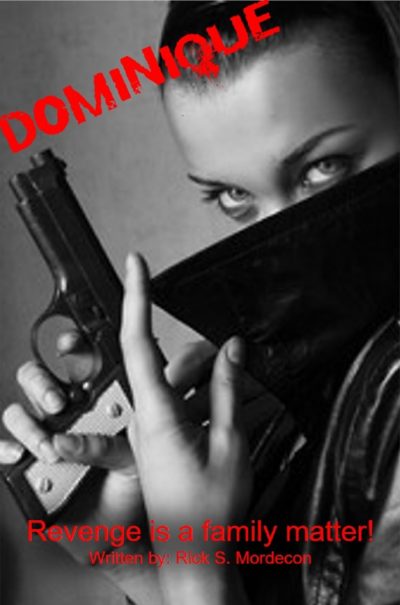 Dominique (TBA)
Dominique (TBA) The Princess (TBA)
The Princess (TBA)